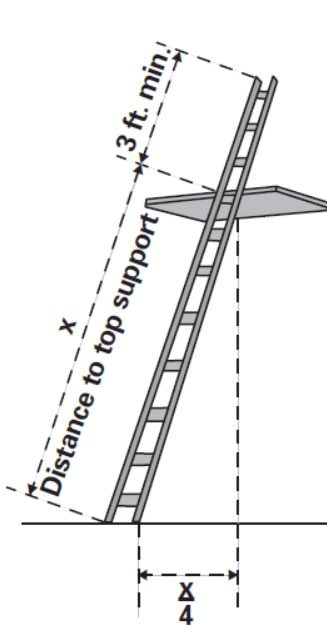OSHA Quick Card: Portable Ladder Safety
Falls from portable ladders (step, straight, combination, and extension) are one of the leading causes of occupational fatalities and injuries.
- Read and follow all labels/markings on the ladder.
- Avoid electrical hazards! – Look for overhead power lines before handling a ladder. Avoid using a metal ladder near power lines or exposed energized electrical equipment.
- Always inspect the ladder prior to using it. If the ladder is damaged, it must be removed from service and tagged until repaired or discarded.
( Download: Ladder Inspection Forms )
You Can Read the OSHA Quick Card: Portable Ladder Safety by Flipping the book below :

- Always maintain a 3-point (two hands and a foot, or two feet and a hand) contact on the ladder when climbing. Keep your body near the middle of the step and always face the ladder while climbing (see diagram).
- Only use ladders and appropriate accessories (ladder levelers, jacks, or hooks) for their designed purposes.
- Ladders must be free of any slippery material on the rungs, steps, or feet.
- Do not use a self-supporting ladder (e.g., step ladder) as a single ladder or in a partially closed position.
- Do not use the top step/rung of a ladder as a step/rung unless it was designed for that purpose.
- Use a ladder only on a stable and level surface, unless it has been secured (top or bottom) to prevent displacement.
( Also Read : Programs: Stairways and Ladders A Guide to OSHA Rules )

- Do not place a ladder on boxes, barrels, or other unstable bases to obtain additional height.
- Do not move or shift a ladder while a person or equipment is on the ladder.
- An extension or straight ladder used to access an elevated surface must extend at least 3 feet above the point of support (see diagram). Do not stand on the three top rungs of a straight, single, or extension ladder.
- The proper angle for setting up a ladder is to place its base a quarter of the working length of the ladder from the wall or other vertical surface (see diagram).
- A ladder placed in any location where it can be displaced by other work activities must be secured to prevent displacement or a barricade must be erected to keep traffic away from the ladder.
- Be sure that all locks on an extension ladder are properly engaged.
- Do not exceed the maximum load rating of a ladder. Be aware of the ladder’s load rating and of the weight it is supporting, including the weight of any tools or equipment.
( Also Read: CAL/OSHA Scaffold Guide for safe use of supported Scaffolds )
Download The Quick Card
OSHA Quick Card: Portable Ladder Safety
More Downloads
- OSHA Quick Cards: Aerial Lift Fall Protection over water in shipyards
- OSHA Quick Card: Reducing Falls During Residential Construction: working in Attics
- OSHA Quick Card: Portable Ladder Safety
- Programs: Stairways and Ladders A Guide to OSHA Rules
- Portable Ladder Self Inspection checklist







